|
Wrapping up 2023, the Best Friend Bike Team, consisting of Emily Schaldach and Johanne Albrigtsen, hosted a Teravail Tire Clinic for FTW-NB cyclists in their community. Cycling is intimidating, there’s traffic and complicated gear and the risk of a flat and slippery corners. The confidence of a grippy new tire we can trust, paired with the knowledge to fix a problem on the road, can truly make a difference. This truth came to life on a sunny Saturday morning in Reno, Nevada where 20 cyclists gathered to learn about their bikes and roll away with confidence. As most weekend mornings should, we started with bagels and coffee, donated by the local Reno Radical Adventure Riders (RAR) chapter. After introductions and proper bagel fueling, riders split into groups where each person received a set of new tires they had requested from Teravail. Emily, Johanne, and their very gracious friend MacKenzie Foster taught each group the how-to’s of changing a tire. How do I take off a back wheel? What’s the difference between a quick release and thru-axle? How do I know the direction to put the wheel back in? Bike upside-down or right-side-up? How do I know when I need a new tire? The questions swirled and we helped one another because, as always, it takes all of us. I worked with the tubeless group, dialing in sealant refill techniques and pumping strategies. We wrestled tires, the sumo squat position a crowd favorite. I try not to pin the word empowered on anyone, but it started as a buzz and grew as the day went on. Riders proclaimed, “Wow I feel truly empowered and like I will actually know what to do if I get a flat.” Ziiiiiingggg! Ba da boom! Music to our ears! Let’s goooo! The day stretched on and our two hour time slot turned to three then four, as we learned how long it takes to teach 20 people how to put new tires on a total of 40 wheels. Our fingers were numb and we were toast, but each person rolled away, testing their new grip on the parking lot and grinning. We passed along tires, but more importantly we passed along the reminder that everyone is capable of learning. Bikes are complicated, and most of us were not told that we had the skills or capacity to do this kind of work, particularly when it involves combining finesse and strength. Each of us do have to fine tune our strategies in order to pull on a tire, we won’t get by on pure brute strength. We have to look two steps ahead, figure out what works for us, and remember those more nuanced techniques are just as valuable as a burly hand. With bagels and some confidence, we did just that. And now there are 20 more rippers in Reno who hopefully feel a bit stronger and more capable, in their tires, and dare I say, hopefully off the bike as well.
0 Comments
I’m Johanne, ½ of the Firefly bike team, Best Friend Bike Team. I am also a PhD student in Hydrology at the University of Nevada, Reno. I used to view my science and biking sides separately. Depending on the context, when I introduce myself to new people and they ask what I do, I choose one of the two to share. I’m an adventure cyclist. I’m a PhD student. Usually paired with an underlying feeling like I’m sliding under the radar by doing both, hoping no one questions how one might actually detract from the other. This summer I got to integrate those two sides. For my PhD, I conduct field research in the remote backcountry of Alaska, in Denali National Park. I am studying how climate change is related to large-scale changes in plant communities in the arctic. To do this I measure an abundance of soil, plant, and water characteristics. However, it turns out that climate change isn’t only impacting plant communities but also essential infrastructure. In the fall of 2019, a massive landslide took out the access road into my site, closing the road for the foreseeable future as the Park Service attempts to build a bridge on actively melting permafrost (challenge those engineers!). This is the only road leading into Denali National Park, surrounded by designated wilderness. With no re-route options, I had to figure out how to get myself, my field assistant (i.e. my brother), and about 200 pounds of science and backpacking gear 73 miles down the closed road. oof. I could either hike around the landslide and then walk far longer than I ever want to walk to get to my site, or!, utilize a bit of a loophole in wilderness designations that allows bike travel on non-vegetated surfaces. As it goes, my cycling skills ended up being an asset to my research. Access to my field research site would have been nearly impossible without the sweet machine that is the bicycle and my slightly unhinged love for unreasonable bikepacking routes. Cue the dream machine! Earlier this year Firefly built me this beautiful ripper of a hardtail. Perfect for singletrack swooping, bikepacking, and, it turns out, scientific field expeditions. Thankful to not have to abandon my summer field research (and my hopes of being a Dr. of Hydrology) I flew up to Alaska and loaded the Firefly up. Boy howdy did this bike rise to the occasion -- unmaintained gravel roads, waist deep river crossings, baby head boulders, rutted stream channels -- the lil bike ate it up. Two weeks in the Alaskan backcountry was the perfect field test of this bike's magic, and the sweetest of opportunities to weld two sides of myself that I thought were too far away from each other to bind. I’ll leave y’all with this - maybe things aren’t as far apart as we think. What if we tried replacing ‘or’ with ‘and’ every once and awhile.
All photos by Tobias Albrigtsen.
Movement tends to provide a certain degree of clarity for me. Perhaps that's one of the drivers of racing, an excuse to move. Well, that, and the insatiable appetite for games.
In 2017 Firefly made me a beautiful gravel bike. I wrote a little thing about the said, ShredSl3d(TM) and titled the article Bonds that (Apparently) can't be Broken. Stay with me here, as there is a point It's mid-2022 and the bike-verse is a bit personally different. Heck, my verse at its entirety is wildly different. Not the most unique narrative as most of us have hyperactively shifted in some way or another during this global continuum of challenges. We're all just ...strengthening our capacity I suppose. TL/DR, I don't really race bikes anymore. I also moved seemingly backwards on the trajectory of life. As the paper reads: married/home owner >> single >> renting an apartment in a couple of CO mountain towns >> move to LA. While quick-feeling, all decisions felt pretty deliberate. Just evolvement and change. Although extremely challenging, Alex and I are still grateful to have been in each other's lives, and hope to continue to respect one another. Those years will always be important. The last couple of years have cast a major light on my relationships in general, not just romantically. An incredible personal observation is how bikes have provided me some of the most important relationships in my life. Even when I want to throw that tool off of a stupid mountain. I love that Firefly has built me these weapons which have their own little tattoos (scuffs), without being (even marginally) compromised. Just like the (many) scars on every pointy part of my body. Not all my relationships revolve around bikes, I'm far too neurotic for that. But I do credit this little machine to a major part of my growth. Call me, a reformed (self-proclaimed) Economist who has relinquished the control, a lot a bit. So this summer, I went on a little roadtrip., and then a flight, and then a road trip, and then another flight, followed by more roadtrips. The trip would equate to 99 hours in the car and plane. Couldn't even hit 3 digits. Initially, the plan was to bikepack throughout Northeastern Spain with my dear friends Jen and Ceasar. Since I would be gone for some time, I wanted Alex to hang with Logan (the most and absolute perfect girl in the world) So we're driving to CO. The plan evolved, as they normally do. But this trip was different. It evolved to a place to where I was able to see some of the dearest and inspiring people I've encountered through bikes. This weird bond around "hey, we've seen some shit, remember how we dealt with that?" and how we're still somehow in the middle of southern France at 1am with a bucket of chicken, wondering how we got here but not at all surprised. We didn't bikepack, but we rode through cities, towns, beaches and countrysides. Rode to beaches and through mountains. Experiencing the people, the food, and seeing some great friends along the way who showed us around their neighborhoods. It is very special how we've made it a priority to stay in each others lives and have used the bike to get to experience and learn, and are continuing to do the same but at a different tempo. Simple stuff, compounded over time. Five years later and my ShredSl3d is still collecting new tattoos, and it's still true that some bonds can't be broken We aren't doing that
We’ve been pretty quiet. Truthfully, because we wanted to take a step back and listen. Have no real agenda other than working to build some new and meaningful relationships. Maybe because we both have no idea what the eff we’re doing, but I don't think anyone does. Racing provided a sense of structure and supplementary support for other aspects of our lives. Perhaps justifying the time we spend with friends. Sharing war stories where pain is always suspiciously forgotten. Emily and I are in parallel moments of change in our lives. To say that's inordinate, may not give credit to the times. We’re just here working to appreciate the little things. Thank you people of bikes, you really help us out. That’s the humanizing beauty of this sport. You can ride (or race) with one another while actively respecting another’s circumstance. Actively having the flexibility or capacity to get to know each other, well, is another thing to consider. It’s a thinking sport, and certainly our own form of expression and connection. There’s lessons anywhere if you look hard enough I suppose. We racing? Ya, whenever it makes sense and whenever we feel like it. That requires its own type and definition of discipline. A little more balance to make room for other priorities, and be a part of the sport in different ways. Just as any relationship we hold so dear, it continues to evolve. Let's be real, we work hard, so we are very grateful to be able to fuck around with our friends on bikes. We hope you’re making space too. I’ve been called crazy a few times in my life. OK, probably more than a few... thanks to the somewhat insane races I continually find myself lining up for. First, it was Unbound XL, which happened to be one of the most meaningful days on the bike in my life. And now, more recently, it was the Leadboat Challenge. Leadboat was a wild idea schemed up by the promoters of the Leadville 100 Mountain Bike Race and the 140-mile SBT GRVL gravel race held in Steamboat Springs. Both race directors realized they had planned their 2020 races on the same weekend in August and that riders were going to have to choose between these two highly anticipated Colorado events. Instead, they created something that would not only allow but actually encourage riders to do both events in one weekend. Crazy! I was unfortunately sitting at the dinner table with both race directors when this plan was hatched, so when they asked if I'd ever consider participating, of course, I said yes. For better or for worse, I was committed at that moment. Well, the 2020 Leadboat didn’t happen for obvious reasons, and I breathed a big sigh of relief. That is, until the email came that they would continue this challenge in 2021, so get ready! All kidding aside, I was really stoked for this double race weekend. I knew it would be painful and miserable at times, but with those types of events, you also often get the highest highs. And not only that, but I would also get to line up against some of the fastest, most inspiring women in both mountain biking and gravel racing across the weekend. Hands down, Leadville was my highlight of the weekend. I was really excited to finally try my hand at this iconic race, and for once, I actually felt pretty prepared. Last fall, Nick and I moved to Nederland, a small mountain town up the canyon from Boulder. We live at 8,700 feet in elevation, so I was banking pretty hard on being well acclimated to the altitude at Leadville. I even found a really sweet local climb to 12,000 feet that I hit a couple of times in preparation for the Columbine climb. But maybe most of all, and I know this is cheesy, I was really excited to race my Firefly Hardtail. This bike has been such an exciting bike to ride the last year and I’ve had a blast training on it. You know when you get a new bike, and it just fits? It just jives with you? That is my Hardtail. So, with great vibes about my preparation and my favorite bike under me, I hit the Leadville 100 so happy and excited to race. And it really worked out. I raced an incredibly steady race, sticking to my nutrition and hydration plan, staying calm in the hectic places, and smashing those high-altitude climbs. I came away with an 11th place finish overall and sub-9-hour time that secured the big belt buckle – have I mentioned I really like prizes? But I didn't have much time to bask in my self-congratulations for too long. Nick quickly pushed me off my bike, loaded everything up, stuck a bottle of recovery drink in my hand, and we hit the road to Steamboat. For the two-hour drive from Leadville to Steamboat, I sat in the back of the van trying to choke down as many calories as my stomach could handle while using the Normatec recovery boots to try and pump some feeling back into my legs. Once in Steamboat, it was time to refocus and get my plan together for some gravel racing. I had originally planned on just riding easy, well as easy as you can for 140 miles, at SBT. But once I realized I was in the top 5 for the Leadboat competition, I knew I had to suck it up and race as much as I could to hold that position. SBT isn’t really a great type of race for me as it doesn’t play to my strengths. It’s too short... I know how ridiculous that sounds... and it’s too fast and too aggressive at the start. Even with fresh legs, I knew I’d struggle with the accelerations. So, with Lead(ville) legs, I knew this was going to be a long day. Just as expected, the race started hot and heavy, and I was quickly dropped as I chugged my way up a climb and watched the lead group fly past. Time to settle in, stick to wheels as much as possible, and just keep moving forward as efficiently as possible. Thankfully, my Firefly Gravel Adventure bike and I are used to that steady pacing after so many epic long rides together. I had a little time to work with thanks to my strong ride at Leadville, but I knew the ladies sitting in 6th, 7th, 8th were charging hard. I found some good folks to ride with, kept focused, and was able to gut things out to the finish and hold my 5th place in the Leadboat overall. Whew, glad that’s done. What an incredible weekend of racing and pushing the limits. Leadboat is certainly a very special race that takes so much focus and planning and just guts to get through those really dark movements. But in the end, that's what we signed up for. We chose to do this, and it's a great reminder that the things that are uncomfortable or scare us a little often make for the most rewarding moments when you realize what you've done.
People keep asking if I’ll do the Leadboat double again. My answer, four days post-race, is still an emphatic no. We'll see what I say in a few months. In any case, I'm sure I'll be signed up for some intriguing and slightly crazy event soon, which one, who knows! We packed our bikes in the living room, a trial run for a much bigger trip! Our drop bars certainly limited bar bag space, okay, noted. Is it unnecessary to bring six extra zip ties? is four enough? How much food do we eat in a day anyways? This pile both feels huge and tiny. Will I regret not bringing additional shoes? The questions were tossed around as we threw titanium trowels into piles and wiggled bottles into newly mounted cages. A few hours prior, my best friend Johanne and I were invited on a bikepacking trip with two of our favorite people, Ashlee and Brooke. We had raced collegiate cycling with Ashlee and she was the senior who had handed us, the freshman, the bottle of Fireball at the bonfires and insisted we play in the no-lights/beer-shotgun/midnight short track relay before we lined up to race the next day. She’s the most delightful bundle of fun and kindness. Brooke, her partner, matches Ashlee’s splendid-ness and has quickly become another one of my favorite people. Ashlee and Brooke were following a 150 mile route through Cedar Mesa - a desert similar to Moab where the rocks, wind, petroglyphs, and occasional tributaries can all stop you, for various significant reasons from the stunning nature of it all to the winds that will quite literally stop you. Johanne and I are in the middle of planning a bikepacking trip through Alaska, we are knee deep in spreadsheets and our reliance on luck to plan this trip. Although Alaska and Cedar Mesa and notably different, this felt like a great trial run. We strapped gear to our gravel bikes and set off. No more than five miles in, we were quickly stopped by yet another feature of the desert- fine and expansive red sand. In our excitement to try out bikepacking on the gravel bikes, we had both overlooked this now very obvious component of the route. In the shed before we left, I had even had my hands on my fatter gravel wheels/tires and shrugged, choosing to keep my 35mm slicks on instead. Que: regret. Also que: CX challenge accepted. For hours, we floated/sunk/exclaimed as we navigated nearly 20 miles of sand pits on the skinniest tires I could have chosen, ah lol. I may have only started racing CX last year, but growing up surrounded by desert sand and making questionable decisions like this one did give me a leg up on learning how to race through sand pits. I guess I’ll add this weekend to the list of unexpected race preparation on this little bike that can do it all :) The sand persisted, and we finally camped, laughed, ate meat sticks, built fires, and dug our toes in the dirt - all the best things, really. We climbed up the Moki Dugway - it was incredible. As you approach the canyon wall, it’s nearly impossible to see how or where the road could possibly weave to the top of the canyon. We basked in sunsets, gasped, and did lots of pointing into the distance. Our four days were filled with sandy miles, sandy walks, packed dirt riding, and lots of skirt-skirting around corners. We made little notes as we went: bring an extra Voile strap for big bottle, put titanium spork in front accessible pocket, yes to a block of cheese per person, worth it to bring real coffee and carry out the grounds. Johanne and I leave for Alaska in three weeks. Soon all the spreadsheet details will be zipped up in tiny compartments and we will be out there hopefully not fending off grizzly bears. For now, we are filled up with appreciation for sandy weekends with some of the best pals around. Cheers, bikes, for bringing us all together. All photos courtesy of the one and only Ashlee Wilson, words by Emily Schaldach.
Ten Tips for Top Ten Athletes (but typically not much better than that)
Dani, KP, and I haven’t won UCI races. We can crack a top ten though, sometimes a top five or a podium. We can throw down at a local race, travel and hold our own in any domestic CX race or gravel race. Dani and KP have taken on the international CX scene like champs. As a team, we certainly have a few rad results and we also balance a range of other work. Dani in particular works long days and is well known for squeezing in a ride from 5:00-7:00 before a full workday (how?). KP is the queen of combining work and racing/training, working for Shimano and artfully making work trips also training trips. I have worked less than Dani and KP but I still support myself through a range of jobs, truly depending on the month. I also raced throughout college and would sometimes submit assignments in my kit after a race, ahhh. We don’t show up at races with a crew of support, we finagle and work our way into a significantly cheaper and simpler setup. Each weekend, we race against people who have budgets that are easily 10x ours for the weekend. Sometimes we are our own pit crew and we travel places where we have host housing, family, friends, or other sponsor/partner reasons to travel there. We’ve all grappled with and initially aimed for racing at the highest level on an international stage. However, I believe we found each other because while we still want to perform, we also want to live a balanced life filled with other interests, work, relationships, and other joys. We are fortunate that there is so much space within cycling to compete at different levels. It’s not always easy or obvious but there is so much space to commit, race, and ride in a way that feels accessible and good for our particular situations. When I was growing up, I immediately looked to the racers who were at the absolute top of the sport. These people are incredible. But the realities of their lifestyle and commitment aren’t realistic or even intriguing to many other riders. Our team falls in this second category. We want to race and also do so many other things. Sooooo, here are ten things we’ve learned for how to build a team that certainly sits squarely between having no support and a factory race setup. Some notes: KP and Dani started this team in 2018 and invited me in 2019. Over the years, we’ve worked with a number of sponsors/partners. We exchange a variety of gear and money for publicity, events, outreach, media deliverables, feedback, and general stoke. Each year we pick the races we want to go to and the team funds can cover the vast majority of these costs. When people ask me if I make money racing, I tell them, no, not really, but I don’t pay for it. This has worked well for us, it offers enough support while still allowing us to live big in other components of our lives. It’s a juggling act and we are all so pleased to have the ability to make it happen together. Top Things I’ve Learned About How to Create a Low-Key Career in Cycling While Also Living A Life Outside the Sport: 1. Rest: If you are going to be working, going to school, or doing much of anything outside of cycling, your number one superpower is rest. Your body takes in the stress from work as well as the stress from training and you can’t possibly train as much as people who only ride and race bikes. If you can, err on the side of rest. I’ve found that going into a race or a workout feeling a little over-rested (as opposed to over-trained or over-tired) makes me a happier and faster rider at the end of the day ~Riding makes you fit, resting makes you fast~ 2. Find friends who are organized: Cycling takes a ridiculous amount of coordination and organization. One of the biggest things I’ve learned is that if you want to travel, race, or start a team with people, pick the organized ones. On race day, even if you have a tiny budget and drove across the country instead of big teams who flew their athletes, being part of an organized and prepared unit of people can make all the difference. Key tip: find a friend with a big organized toolbox, these are the ones you want! 3. Be nice: One of my favorite quotes is “Be soft and kind but take no shit” The cycling industry is small, it pays off (big time) to do what you can to show up feeling good so that you are kind to people. No one likes a stressed racer who yells at people. If you can be calm, kind, approachable, not an asshole, and remember that THIS IS ALL FOR FUN, you’ll make it way further in this sport and make more friends in the process. 4. Adapt: Our theme of 2019 was adaptability. Dani brought his one up after feeling impressed at what bodies can adapt to. Need to ride before the sun rises every day? Only have candy to eat on this ride? Your warmup was messed up because you got a flat? You have a meeting and group ride at the same time? Adapt! Do it all! Make it happen! It really is incredible how we can adapt both physically and mentally. We were quick to adapt to working, traveling, training, racing, and eating funky food or navigating sub-optimal sleep schedules, ya just do it! The more strategies you can have to keep your calm, find the things that keep you sane and happy, prioritize your needs within the circumstances around you, and tune into what you need, the better you’ll do! In terms of mentally adapting, we learned flexibility and how to organize our time to maximize efficiency and joy. Unlike racers who can schedule their entire days around training or racing, if you also work, it can take some logistical cartwheeling to make the days work, you’ve got it though :) just think of it as a fun puzzle, and don’t forget Tip #1: REST IF YOU NEED TO OR WANT TO! 5. Don’t bother cold calling a sponsor, work through connections, always: It sounds fun to shoot off an email to Specialized asking for sponsorship, but in my experience, if I didn’t have someone introduce me and I hadn’t won big professional races, I’d truly never get a response. Talk to people, ask people you look up to, find a friend of a friend to introduce you to someone at the company. This sort of networking can be tough, but it will ensure your sponsorship inquiries are actually worth your time. 6. Be creative: Chances are you’ll show up at races and be on a start line somewhere with someone who has tens of thousands of dollars behind them in terms of gear, mechanics, travel, support, income. If this isn’t you, you’ll have to get creative to stand your ground on that start line. This could mean prioritizing races where you have a host-house you can stay in, this could also mean you drove for twelve hours and worked remotely in the passenger seat for a few hours while traveling. At one CX race, Dani and I had chosen to go light (and cheap) and travel with only one bike each. We raced the first day on a dry course and the second day it was shockingly muddy. Dani graciously offered to let me ride her bike as a pit bike while she worked in the pits and I raced. Yes, she’s the best. While this was a bummer for Dani on the day, we opted for the chances of having one good race instead of two nearly guaranteed bad races. At this race, there were teams with multiple mechanics and fleets of bikes. We were there staying at a host house and it was just the two of us with two bikes. We got creative, we made it work, and it ended up being an epically fun and great race for me thanks to Dani’s creativity and commitment to flexibility. Would it have been nice to have four bikes, eight sets of wheels, and multiple mechanics, certainly! Did we still compete and spend only about $600 for the two of us that weekend, also yes! The theme of the weekend: we’re doing it live! 7. What else can you offer that isn’t always a win? When you win big, people look to you automatically. Unfortunately, only a few of us can win so big that this happens. Most riders have to wiggle their way into good results and also present a combination of other intriguing factors. For example, we as a team have set up schedules in the past to write blog posts for each of our sponsors and we have made intentional time and travel plans in order to do events with sponsors. We spent an extra few days in Boston and had a super fun meet and greet at Firefly, a few weeks later we raced in Chicago primarily to spend time with Luke from TenSpeed Hero and have an open house at the studio. We have found ways to be valuable, fun, and appreciated outside of our results. While the results can help and are certainly fun, we have intentionally put ourselves in a situation where we are more than our results. We work with people who care about things like big adventures, creative endeavors, or providing feedback instead of solely relying on winning big races. 8. Communicate really really well with people who you work with: I cannot stress this enough. If you have come to an agreement with someone to work together, it is on you to communicate with them. For example, as soon as COVID hit, Dani composed emails to each of our sponsors outlining how this was affecting our seasons and changing the things we felt safe doing. We were able to connect on the uncertainty and I like to believe that we found common ground in understanding where each other was coming from and what we were experiencing. We were able to work together and make a plan as opposed to feeling scared to change the expectations we had set earlier in the year. 9. Learn how to make a killer deck: A deck is a sponsorship/partnership proposal that is typically a well-designed set of slides that showcases who you are, what you can offer, what you’d like in return, and why you are the person for the job. I use Canva (mostly because it’s free and easy to use). Our decks are typically 8-12 pages with colorful slides, pictures, clear concise wording, and an intriguing narrative throughout. We aim for a balance of personal and fun to mirror that while we are here for fun we will still approach this relationship from a professional standpoint, knowing companies and people are investing time and money into us. Also, proofread!! 10. Be realistic about what you can commit to: This advice stretches from committing to too many races, committing to too many social media posts, too much travel, too much training. Be realistic, how will you balance your job, training, racing, traveling, and partnership commitments? All of this adds up quickly and before you commit, think hard about if this will end up feeling attainable and mutually beneficial or if this is one too many things and will make you feel perpetually stressed. Particularly when you are working or in school in addition to racing, the little things can add up. Racing either once a month or twice a month can feel like a menial decision when you’re planning, but once you actually have to pack up, do work on the road, and recover, this can be a massive difference. Again, going back to rest, I’m slowly learning over and over that less truly can be more. This is a glimpse! If you have more questions that you believe we could answer, reach out! This stuff is tricky and we’d love to support you in navigating this sort of race/lifestyle balance. :) The Utah desert is a fickle temptress. She lures you in with her brilliant red rocks splashed against a bluebird sky with endless trails to explore. Then she turns on you with sharp, desolate terrain that can send you spinning in a matter of seconds. Abrupt cliffs bleed into the vast canyons beyond, and your sense of time and space alter at entry. But this warm, treacherous, dynamic terrain is what makes this area so unique. With one downpour or a series of windy nights, the land transforms, offering up a new experience on old trails. In what turned out to be a wildly unpredictable, stressful, and strange year, the old friendly call of the Utah desert came a little later this fall. Answering that call, Dani and I set out to ride the 100-mile White Rim mountain bike route on a crisp, quiet November day. 17. Degrees. Fahrenheit. That's what the thermometer read as we got up on our chosen White Rim morning. It had been a cold week in the desert, colder than at home in Colorado. But the days warm up so nicely, and so we piled on our layers, drank an extra cup of coffee, and procrastinated juuuuust enough to keep our fingers from falling off as we set out on what we dubbed "The big dumb ride." Dumb, because neither of us was anywhere close to feeling prepared physically for this monster. Late fall is usually cyclocross season, but since that's not happening, it's meant an earlier and longer off-season from training. But when you can't resist the desert's call, you suck it up, pack a lot of snacks, and prepare for a long but brilliant day out on the bike. The White Rim trail runs through Canyonlands National Park just outside of Moab, Utah. It's a 100-mile route that skirts along canyon rims and riverbanks and is made up of mostly double-track jeep roads and wide open slabs of rock. The terrain is rocky, bumpy, dusting, and technically challenging at given times. Our Firefly Hardtail mountain bikes were undoubtedly up to the task of this route, even when our legs weren't. I ran some bigger tires (2.6 and a 2.4) for a little extra flotation on the sand and more suspension over the chunky stuff. We flew along the flatter sections, throwing down the power and chasing each other up the climbs. Then dropping our seats, we bombed down the sketchy, washed-out descents. OK, Dani bombed and skidded down these; I squealed and panic-braked. We pedaled and pedaled and pedaled some more and then stopped to eat lunch on the edge of a cliff and contemplated trying to race this monstrous route one day. There's been a whole lot of hullaballoo about the White Rim FKT this season. The women's record has been set and reset and smashed again and again so many times in the span of a month. It's been the most exciting sporting event to watch this year! With the women's record sitting at just under seven hours, it's hard to imagine racing through this landscape so quickly. As first-timers on the White Rim, we probably spent more time stopping for oohing and awing than we did pedaling. After a long, scenic day on the bike, we wrapped up our ride feeling full of happiness - something that is inevitable when you spend your day riding through a Georgia O'Keefe painting. As night quickly fell, so did the temperature and the desert reminded us once again of her menacing demeanor. Through shivering spasms, we sipped hot chocolate to thaw our numb fingers and toes and laughed at our "brilliant idea" of starting the day late to avoid the morning cold. Despite the long hours in the saddle, the chunky terrain, the freezing temperatures, and the aching bodies, there’s no doubt in my mind that we’ll be back to the White Rim soon. Just as our tire tracks will be wiped clean with the next storm that thunders through the vast landscape, our memories of this place are washed clean with time, brightened up so we forget about the climbs, the rocks, the cold. And just like that, all we see is the desert smiling down on us, temping us back into her brilliant arms. And yes. We will go.
Approximately three weeks ago, a friend of mine mentioned a concept to me which absolutely blew my mind. You've heard it, the "Led Zeplin sound" - you may not know the lyrics, or the name of the song. But you sure as hell know it's Led Zeplin. The band was so incredibly unified and in sync with how they wanted their "sound" to be, that even the impromptu solo at a concert, whether it be Jimmy Page or John Bonham, created this very distinct noise which is Led Zeplin. This is tight but loose. Such an incredible postulation
Bike packing is the ultimate definition of "tight but loose". Since I had no idea what I was doing, this was an excellent way to throw a wrench into my perhaps complacent thinking/living tenancies. Luckily, our BNG squad is a pretty adaptable bunch We only did 3 nights/ 3 days on the Colorado trail (Kenosha Pass to Buena Vista), but it was enough for us to all to mess up a little and adapt. Greatest thing about this trip was learning from each other. There was no time for ego, when we all need to get to the same place together in one piece. My (Dani) brain is a dump of not-so-existential epiphanies. So please see the following lessons and realizations around this newly acquainted (excellent) sport of bike packing:
Hi Sweet People,
I was asked to write you a good luck letter as you near graduation. If I were to write this letter a the beginning of March, I would have included lots of exclamation points. You made it! The world is your oyster! I am so proud of you! School is so hard and you did a tremendous job! While all of this is true, it’s all been complicated in the last few months by this virus. I was listening to a woman yesterday who was talking about how this is truly a great, collective pause. We may not have wished for this pause, but here we are, and in some ways, we have an unprecedented opportunity to breathe, right here. In 2018, I crashed while biking and sustained a gnarly concussion. In the months that followed, I felt primarily miserable, amid brief feelings of healing, content, joy, and growth. At the time, I would never have wished that sort of injury on anyone, there were days when the only thing I could do was rake leaves, not even put them in bags, just rake them into piles. However, a year later, I started feeling incredibly thankful for the experience. I started saying it was absolutely net-positive. Prior to this concussion, my frenetic, planner-oriented days had left so little space for stillness. Even though I was concussed, I started to feel these deeper parts of who I am bubbling up. I had to start listening to myself, instead of tuning out and focusing on what was happening around me, reacting to the stress of school or what other people wanted from me. Most directly, if I didn’t listen to what my body was telling me, I would end up in a situation where I was far from home and usually with a headache that would put me to bed before the sun set. I learned to listen to the tiny clues, the slight dizziness, or a tiny tinge of pain in my neck in order to keep myself safe and healing instead of taking steps backward and feeling bad for the following days. This listening to my physical body resulted in learning how to listen to my mind as well. I started to understand what intuition was, I felt the nudging thoughts that I’d always had but never addressed. The stillness forced me to turn in. It was incredibly challenging to set a timeline, plan, or even expect anything. I quickly learned that the three-week recovery timeline I’d been given by my doctor was wildly inaccurate. As the months rolled on and I still didn’t heal, I had no choice but to release all expectations. I couldn’t possibly plan for next month, all I could do was listen to what I needed in this moment. I understand there are countless differences between a concussion and a global pandemic, but I find myself being dropped back into the concussion time as I navigate the last few weeks. Here are some of the things I learned after living through a bizarre break from the world and then slowly coming back: -You are here, how incredible is that? You are breathing and your body is working so hard to take care of you. Perhaps now is a great time to say thank you to your body and to look, listen, smell, and feel what’s happening around you. -Planning is important, but having a plan means nothing. It’s super important to go through the process of planning if that feels good, but once you have that plan, it means nearly nothing. We have very little control over what is happening around us and therefore that plan may pan out, but it very well may not. (In the last two years, I’ve planned two trips to bikepack in Europe, the first one was canceled after I already had plane tickets when my best friend fell off a cliff and shattered her foot, this year, we replanned the trip, bought tickets again, and here we are in the middle of a pandemic, with yet another trip canceled) So! Planning is good and exciting and can offer some direction, but the plans can be swept away with the breeze. -Be gentle with yourself. You are trying so hard and you are doing everything you can at this time. All of the things you do are strategies to keep you alive. If you lean on exercise, food, Netflix, relationships, or grades, each of these are part of a strategy you’ve brilliantly developed to keep yourself afloat, functioning, and safe. Even anxiety or depression are strategies our body had developed to keep us safe. For example, if the world is too scary, our body may turn to depression in order to numb out the scariness. If we’ve been taught to seek validation, perhaps a relationship or grades have kept us afloat and mirrored back to us what we want to see in ourselves. All of this points to the notion that we are not actually any of these things. None of us are depression or are our grades. We are not other people’s expectations of us. It is not our job to live up to the expectations other people have of us. At our core, we are good. Each of us is so so good, whole, and beautiful. Regardless of which strategies we have leaned on or learned to hold tight to, they do not define us and they are not who we are. You can be gentle with yourself, it’s not easy, but it can feel good to offer ourselves some grace, some space, and some curiousness about who we are without these strategies we’ve developed. Remember that this lightness is already inside you, you already have happiness inside you, you have peace inside you as well -- you do not have to go looking for these things, they are already there within you. -After everything, remember you have permission to begin again. Whether this resonates for your day, for just a moment, or for the last years, you are growing and learning and expanding. This means the old shell you lived in may or may not serve you anymore. You can change and you are not stuck in what you can do based on what you did yesterday. -You don’t have to make sense of anything today. You don’t need to solve any problems, you don’t need to feel okay, you don’t need to follow any script. There is no right way to feel, so, as the confusion of graduation, online school, uncertainty, families, health, fear, needs, and aspirations all squiggle together into a blur of color, you are allowed to sit and breathe, or eat ice cream, or cry, or sleep. Whatever it is that you need right now, feel it, and take note that it is happening. Realizing what you’re doing and perhaps being curious as to why can allow us to grow. However, there are really no rules and you do not have to do anything at this time. This comes back to being gentle with yourself. This is confusing! And hard! And disorienting! No one is solving it today and you can’t figure out your life, or maybe even next week, at this time. This is okay though, if you can embrace the groundlessness, we are all floating above where we perhaps felt grounded just a little while ago. Maybe this space is just what we needed to know where we want to land next time. While all of this may feel isolating or scary, the irony is we are all experiencing waves of similar moments. Your experience is your own, but it is also shared. I can’t imagine the uncertainty you may be feeling, graduating into a world so greatly limited by a virus. I too, feel scared and uncertain. I also know that things are changing all the time and they will shift back and forth. Things will get better, they will also get worse, but they will get better. If any of you would like to chat, I am here. Oh! Also! When I started this letter, I intended to tell you all that teaching recitation was, without a doubt, the most important thing I did at CU. Each of you holds such a big piece of my heart. That semester, I cared so much about supporting you and doing what I could on the day to bring a sense of calmness and love into your days. Since teaching recitation, I’ve settled into the idea that I want to teach at a university. So, while this is a good luck, and a please take deep breaths note, I also want to say thank you for fueling me with hope, excitement, and some guidance. Sending lots of love. -Emily |
AuthorWrite something about yourself. No need to be fancy, just an overview. Archives
September 2022
Categories |


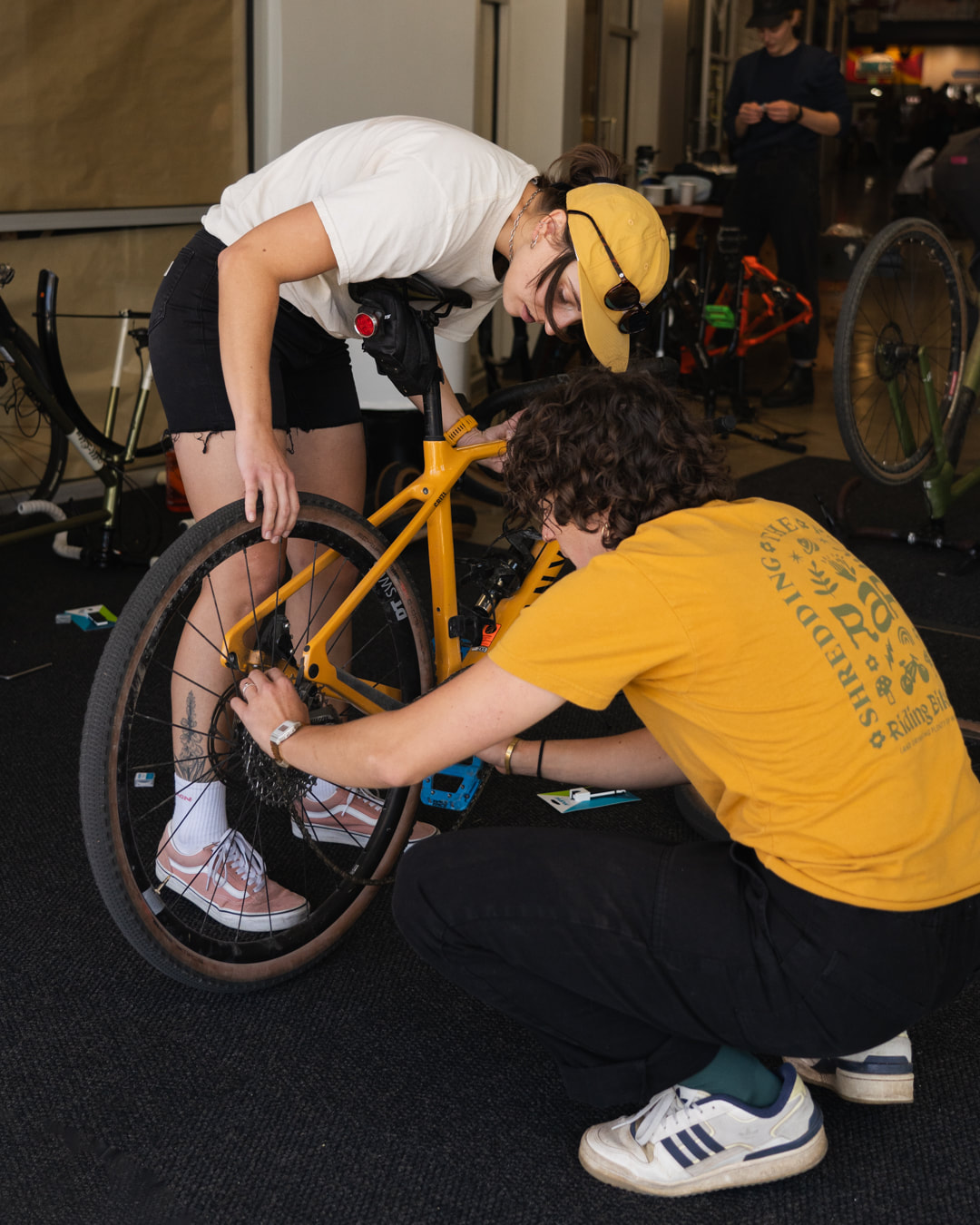
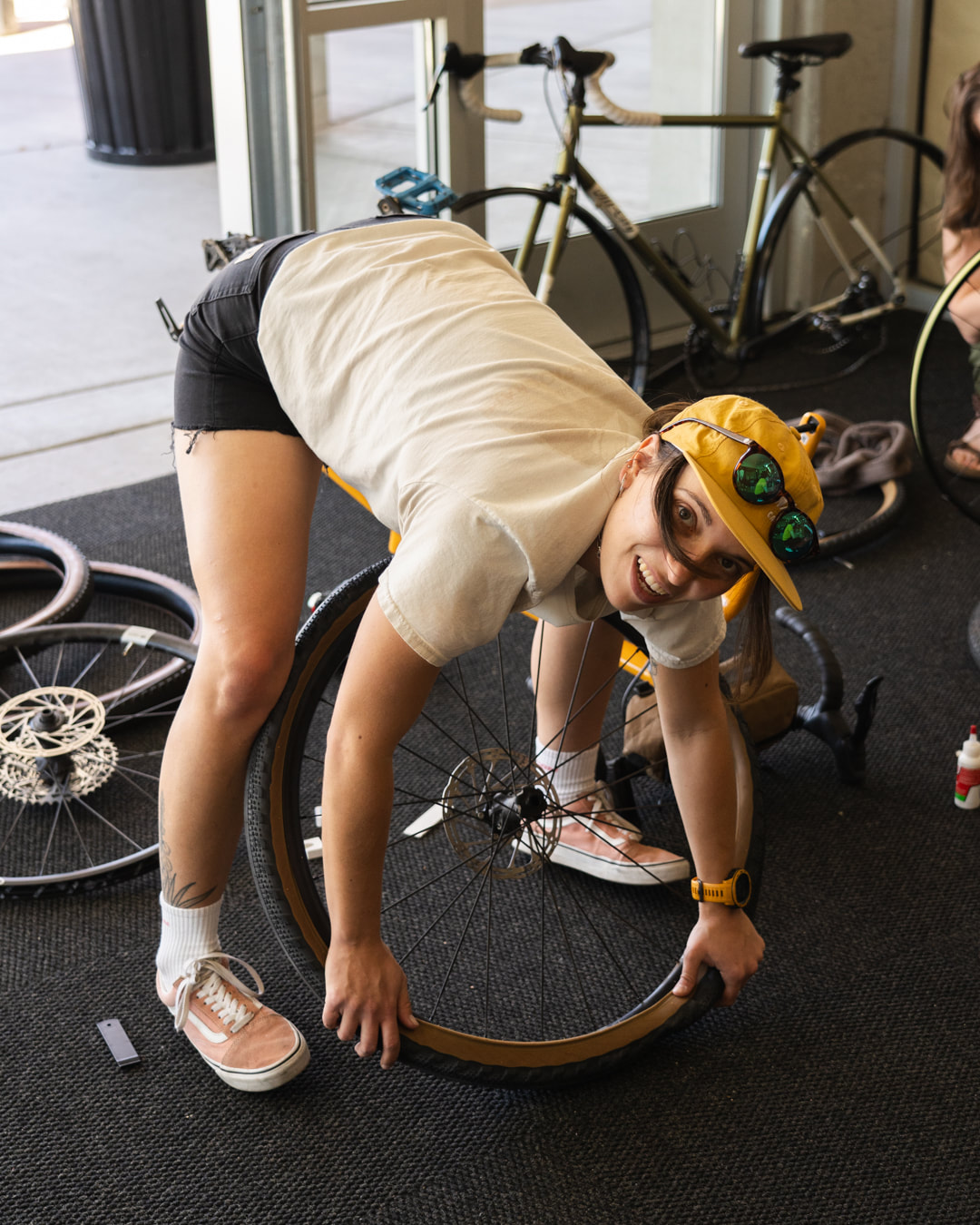








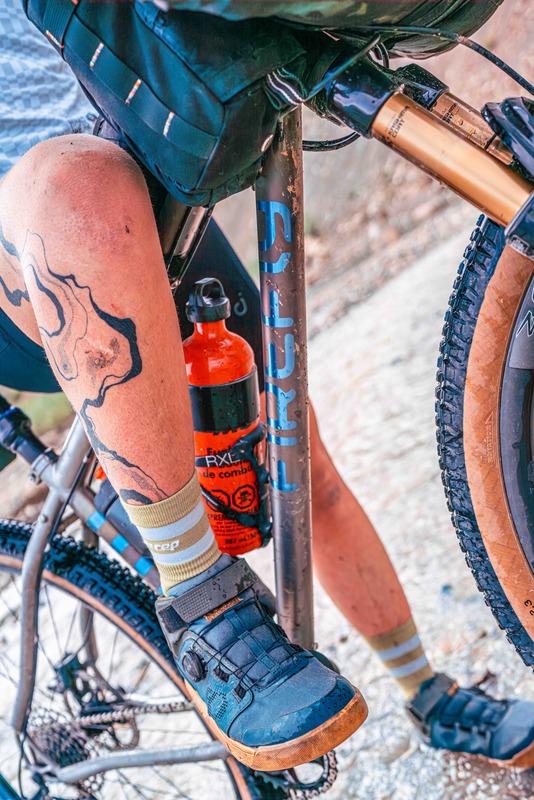

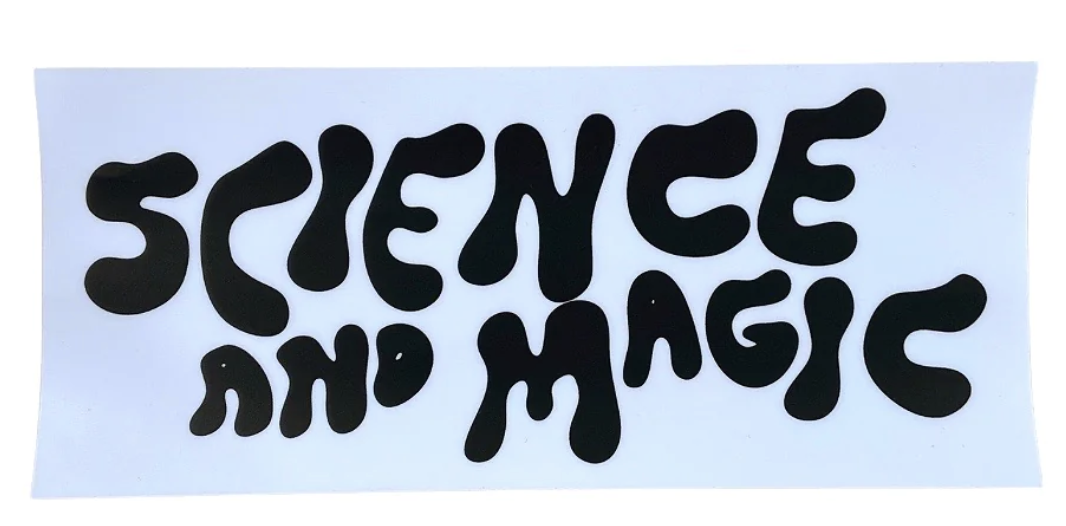



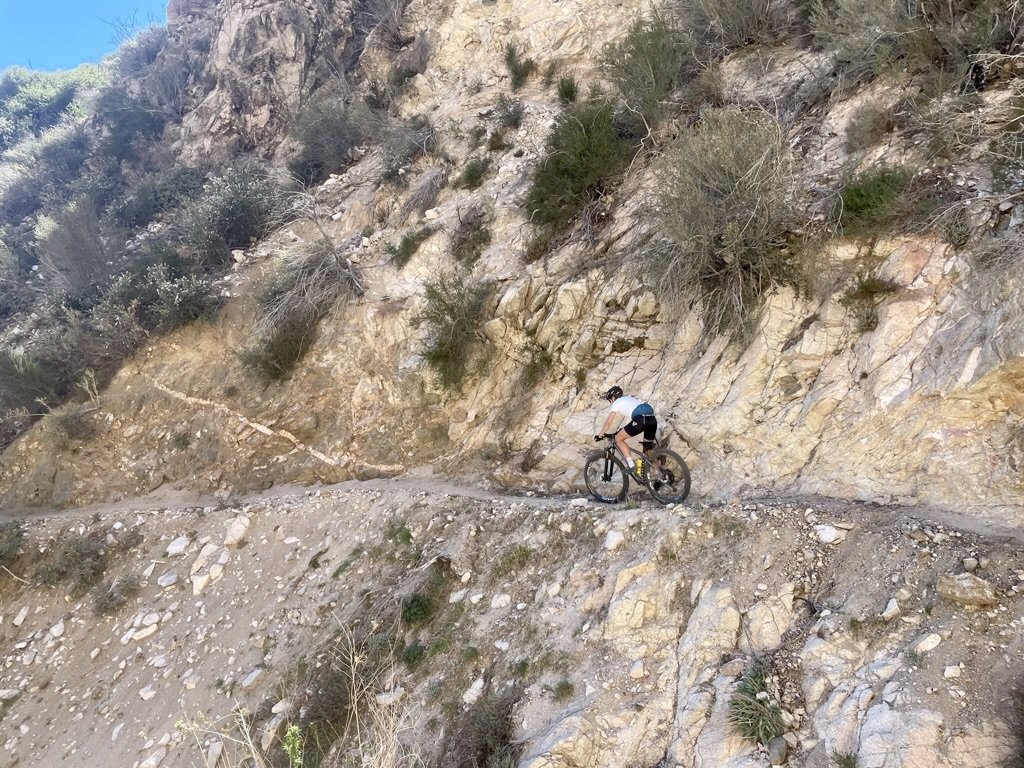













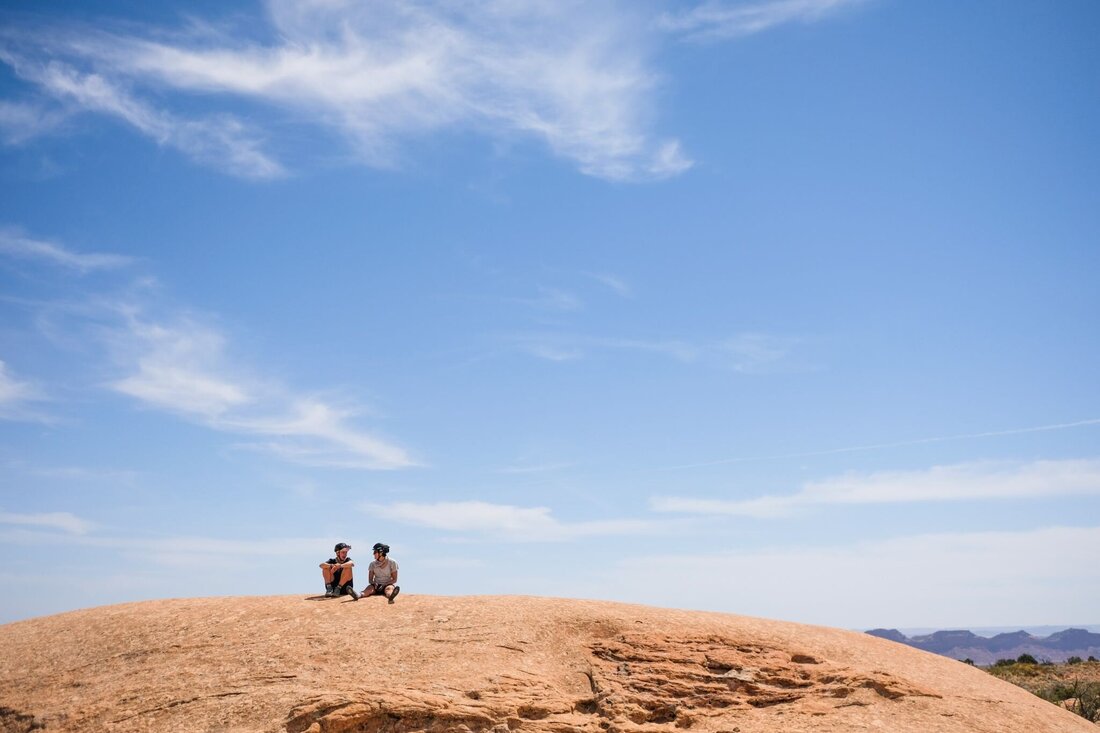
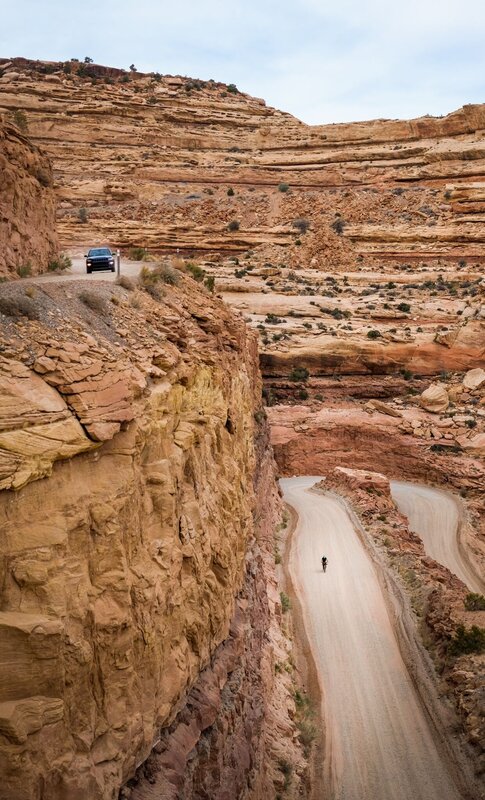
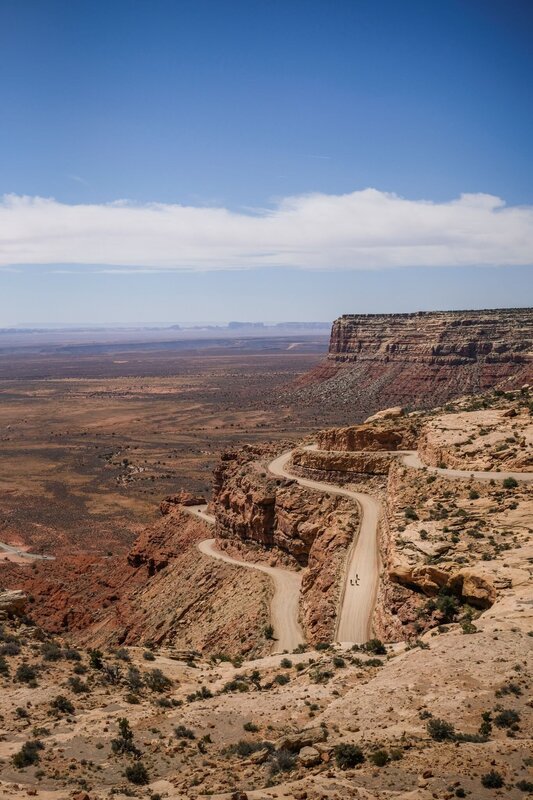



















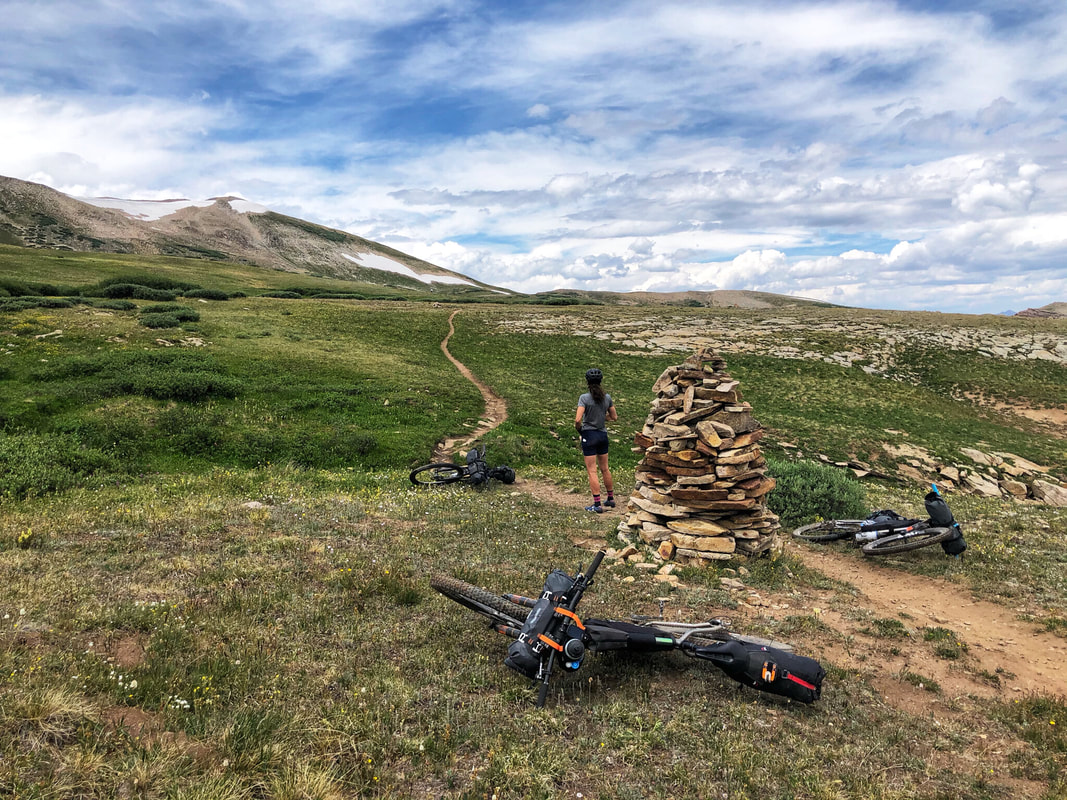
 RSS Feed
RSS Feed
